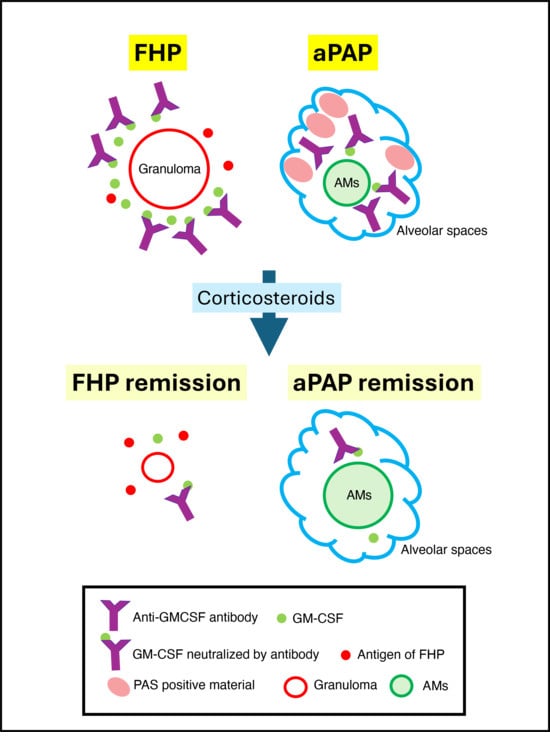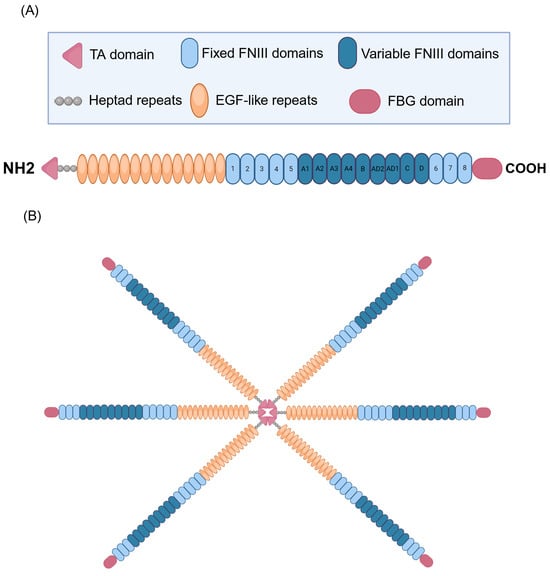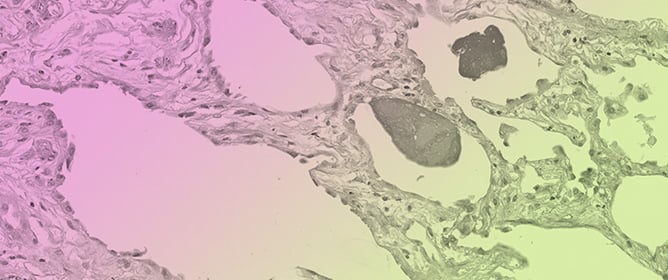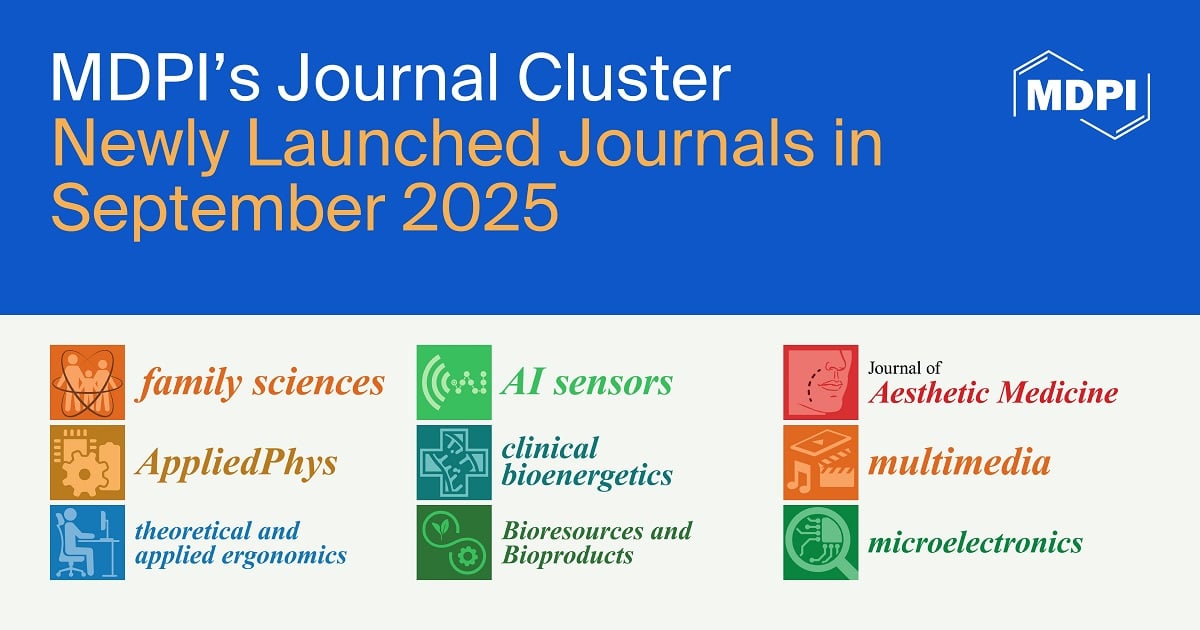Journal Description
Pathophysiology
Pathophysiology
is an international, peer-reviewed, open access journal on the etiology, development, and elimination of pathological processes. The International Society for Pathophysiology (ISP) is affiliated with Pathophysiology, which serves as the official journal and is published quarterly online by MDPI (from Volume 27, Issue 1 - 2020).
- Open Access— free for readers, with article processing charges (APC) paid by authors or their institutions.
- High Visibility: indexed within ESCI (Web of Science), Scopus, PMC, PubMed, and other databases.
- Journal Rank: JCR - Q2 (Pathology) / CiteScore - Q2 (Pathology and Forensic Medicine)
- Rapid Publication: manuscripts are peer-reviewed and a first decision is provided to authors approximately 24.7 days after submission; acceptance to publication is undertaken in 2.9 days (median values for papers published in this journal in the first half of 2025).
- Recognition of Reviewers: APC discount vouchers, optional signed peer review, and reviewer names published annually in the journal.
Impact Factor:
2.6 (2024)
Latest Articles
Medullary Thyroid Carcinoma Without Calcitonin: A Case Linking Ultimobranchial Bodies to Tumor Evolution
Pathophysiology 2025, 32(4), 56; https://doi.org/10.3390/pathophysiology32040056 - 23 Oct 2025
Abstract
Medullary thyroid carcinoma (MTC) is a thyroid tumor with neuroendocrine properties purportedly derived from C-cells. The biochemical activity of medullary thyroid carcinoma includes the production of calcitonin and carcinoembryonic antigen, which are sensitive tumor markers, facilitating diagnosis, follow-up, and prognostication. Calcitonin-negative medullary thyroid
[...] Read more.
Medullary thyroid carcinoma (MTC) is a thyroid tumor with neuroendocrine properties purportedly derived from C-cells. The biochemical activity of medullary thyroid carcinoma includes the production of calcitonin and carcinoembryonic antigen, which are sensitive tumor markers, facilitating diagnosis, follow-up, and prognostication. Calcitonin-negative medullary thyroid carcinoma is a rare, poorly understood primary neuroendocrine carcinoma of the thyroid characterized by classic medullary thyroid carcinoma morphology without raised serum calcitonin and with or without the expression of calcitonin detected by immunohistochemistry. Previous studies reported that C-cells were derived from the neural crest; however, more recently, C-cells have been indisputably shown to be derived from the pharyngeal endoderm and ultimobranchial bodies. Ultimobranchial body (UBB) remnants can persist in the thyroid and express p63, but their function is poorly understood. Some have postulated that ultimobranchial bodies may be the “stem” cell of the thyroid and may be precursors for thyroid tumors, particularly mixed tumors with follicular and medullary components. We present a unique case of calcitonin-negative MTC in a 58-year-old male arising in an inflamed and fibrotic thyroid with numerous scattered ultimobranchial body remnants and concomitant C-cell hyperplasia/medullary microcarcinoma (CCH/MMC). The ultimobranchial body remnants, C-cell hyperplasia, and medullary thyroid carcinoma were MTC classifier positive according to ThyroSeq®. The areas representing CCH/MMC expressed calcitonin by IHC while the main MTC tumor was negative. An additional unique feature was an area demonstrating a “mixed” C-cell/thyroid follicular epithelial phenotype. In this review we review the possible etiologies of calcitonin-negative MTC, the possibility of a neoplastic sequential progression from ultimobranchial bodies to CCH/MMC to medullary thyroid carcinoma with the individual elements (UBB, CCH/MMC, MTC) demonstrated in this thyroid, and previous postulations that ultimobranchial bodies may be the source of some follicular thyroid cancers, medullary thyroid cancers, and mixed tumors of medullary and follicular epithelial types.
Full article
Open AccessArticle
Myxoid Stromal Histophenotype Is Associated with High-Grade and Persistent Cervical Intraepithelial Neoplasia
by
Leila Stabayeva, Madina Mergazina, Yevgeniy Kamyshanskiy, Gulchekhra Ikhtiyarova, Zhanna Amirbekova, Gulnazira Imanbayeva and Olga Kostyleva
Pathophysiology 2025, 32(4), 55; https://doi.org/10.3390/pathophysiology32040055 - 13 Oct 2025
Abstract
►▼
Show Figures
Objectives: To evaluate the diagnostic and prognostic value of histophenotyping of the extracellular matrix of the cervical stroma at cervical intraepithelial neoplasia (CIN). Methods: Retrospective analysis of 160 biopsies and surgical preparations of the cervix in women of reproductive age included cases of
[...] Read more.
Objectives: To evaluate the diagnostic and prognostic value of histophenotyping of the extracellular matrix of the cervical stroma at cervical intraepithelial neoplasia (CIN). Methods: Retrospective analysis of 160 biopsies and surgical preparations of the cervix in women of reproductive age included cases of CIN 1–3 and the group with confirmed persistence or lesion progression (CIN P) at repeated biopsy. The control group (n = 40) consisted of morphologically intact cervical tissue. Histophenotypes were evaluated by staining with hematoxylin, eosin, and Masson trichrome, and classified as follows: normal (dense parallel bundles of type I collagen), intermediate (disorganized and fragmented type I collagen fibers), and myxoid (amorphous weakly fibrillar matrix). The clinical, viral, and inflammatory characteristics between histophenotypes were statistically compared. Results: The distribution of histophenotypes of the extracellular matrix of the cervix varied significantly depending on the CIN degree (p < 0.001). In the control group, the normal pattern was detected in 97.5% of cases; its frequency decreased from CIN 1 (27.5%) to CIN 2 (12.5%) and was absent at CIN 3. The frequency of the myxoid pattern increased significantly in severe and persistent forms: 55% at CIN 3 and 62.5% at CIN P. Human papillomavirus 16/18 was most frequently detected in groups with intermediate (69.1%) and myxoid (27.2%) patterns. Inflammatory changes were more often accompanied by disorganized extracellular matrix; however, intermediate and myxoid types also occurred in the absence of inflammation. Conclusions: The myxoid histophenotype of the extracellular matrix is significantly associated with the high degree of dysplasia and CIN persistence. It can reflect the morphological equivalent of tumor-associated stroma remodeling. Histophenotyping of the extracellular matrix of the cervix appears to be a promising method of risk stratification and may complement existing diagnostic algorithms for CIN.
Full article

Figure 1
Open AccessArticle
MicroRNA-371a-3p Represents a Novel and Effective Diagnostic Marker for Testicular Germ Cell Tumours: A Real-World Prospective Comparison with Conventional Approaches
by
Margherita Palermo, Carolina D’Elia, Giovanni Mazzucato, Christine Mian, Christine Schwienbacher, Esther Hanspeter, Silvia Clauser, Salvatore Mario Palermo, Armin Pycha, Isabel Heidegger, Igor Tsaur and Emanuela Trenti
Pathophysiology 2025, 32(4), 54; https://doi.org/10.3390/pathophysiology32040054 - 6 Oct 2025
Abstract
►▼
Show Figures
Background/Objectives: Testicular germ cell tumours (GCT) have high cure rates, especially in early stages. MicroRNA-371a-3p (M371) has recently emerged as a highly sensitive biomarker for malignant GCTs, except teratoma. This study aimed to evaluate the diagnostic performance of M371-test in a real-life clinical
[...] Read more.
Background/Objectives: Testicular germ cell tumours (GCT) have high cure rates, especially in early stages. MicroRNA-371a-3p (M371) has recently emerged as a highly sensitive biomarker for malignant GCTs, except teratoma. This study aimed to evaluate the diagnostic performance of M371-test in a real-life clinical setting, compared to conventional markers alpha-fetoprotein (AFP), lactate-dehydrogenase (LDH), and beta-human chorionic gonadotropin (β-HCG) in patients with suspected GCT. Methods: The study, approved by the Ethic-Committee of the Provincial Hospital of Bolzano (N.97-2021), included 91 M371-tests, performed from March 2021 to May 2025. A total of 75 patients had suspected GCT; 19 healthy males served as control. Serum levels of M371, AFP, LDH, and β-HCG were compared with final histopathological diagnosis. M371 was also assessed in controls to evaluate test performance. Secondary analyses investigated correlations between preoperative M371 levels and tumour size in non-metastatic patients, and between M371-levels and clinical stage in the entire GCT cohort. A cut-off of RQ > 5 (relative quantification) was used to calculate sensitivity, specificity, and predictive values. Results: M371 showed a sensitivity of 90.9% and specificity of 89.3%, outperforming in terms of sensitivity AFP (20.4%/96.4%), LDH (40.9%/96.4%), and β-HCG (43.1%/100%). Positive predictive value (PPV) and negative predictive value (NPV) were 93.0% and 86.2%, respectively. Sensitivity was 95% for non-seminomas and 87.5% for seminomas. In non-metastatic patients, M371 levels correlated with tumour size and were significantly higher in advanced stages (median RQ 1128.35 vs. 98.36; p = 0.015). Conclusions: M371 showed excellent diagnostic performance, even for small tumours, supporting its clinical use. Further studies are needed to define its role in treatment planning and follow-up.
Full article

Figure 1
Open AccessArticle
Carbon Monoxide in an Experimental Model of Chronic Pelvic Pain Syndrome: The Effects of CORM-A1 on Pain and Anxiety-Related Behaviors
by
Nikola Šutulović, Neriman Ezgin, Nela Puškaš, Emilija Đurić, Željko Grubač, Daniel Škrijelj, Milena Vesković, Dušan Mladenović, Isidora Savić, Djuro Macut, Yavuz Dodurga, Aleksandra Rašić-Marković, Olivera Stanojlović and Dragan Hrnčić
Pathophysiology 2025, 32(4), 53; https://doi.org/10.3390/pathophysiology32040053 - 1 Oct 2025
Abstract
►▼
Show Figures
Current standard treatments for chronic prostatitis/chronic pelvic pain syndrome (CP/CPPS), a urological disorder with anxiety as a major comorbidity, are limited in success rates. Recent findings revealed the anti-inflammatory and neuroprotective effects of CO-releasing molecules (CO-RMs), but there is a gap in the
[...] Read more.
Current standard treatments for chronic prostatitis/chronic pelvic pain syndrome (CP/CPPS), a urological disorder with anxiety as a major comorbidity, are limited in success rates. Recent findings revealed the anti-inflammatory and neuroprotective effects of CO-releasing molecules (CO-RMs), but there is a gap in the knowledge on its effects in CP/CPPS. Therefore, the objective of our study was to investigate the potential therapeutic effects of CORM-A1 on the scrotal pain threshold and anxiety-related behaviors in experimental model of CP/CPPS. Adult Wistar albino male rats were randomized to Sham (intraprostatic saline) or CP/CPPS (intraprostatic λ-carrageenan) groups (n = 12). Half received CORM-A1 (2 mg/kg/day, i.p., days 1–7), others PBS, forming four subgroups (n = 6). The pain threshold (by an electronic von Frey esthesiometer) and anxiety-like behavior (by an open field, elevated plus maze and light/dark test) were assessed; prostates were histologically examined. Carrageenan-induced CP/CPPS caused significant mechanical pain hypersensitivity (p < 0.001), anxiety-like behaviors (p < 0.001–0.05), and histological prostate damage when compared to corresponding Sham groups. CORM-A1 treatment increased pain thresholds (p < 0.001) and improved behavioral outcomes (p < 0.001–0.01) in all ethological tests. These findings indicate that CORM-A1 exerts analgesic and anxiolytic effects in an experimental model of CP/CPPS in rats.
Full article

Figure 1
Open AccessPerspective
Embryonic Signaling Pathways Shape Colorectal Cancer Subtypes: Linking Gut Development to Tumor Biology
by
Kitty P. Toews, Finn Morgan Auld and Terence N. Moyana
Pathophysiology 2025, 32(4), 52; https://doi.org/10.3390/pathophysiology32040052 - 1 Oct 2025
Abstract
The morphogenesis of the primordial gut relies on signaling pathways such as Wnt, FGF, Notch, Hedgehog, and Hippo. Reciprocal crosstalk between the endoderm and mesoderm is integrated into the signaling pathways, resulting in craniocaudal patterning. These pathways are also involved in adult intestinal
[...] Read more.
The morphogenesis of the primordial gut relies on signaling pathways such as Wnt, FGF, Notch, Hedgehog, and Hippo. Reciprocal crosstalk between the endoderm and mesoderm is integrated into the signaling pathways, resulting in craniocaudal patterning. These pathways are also involved in adult intestinal homeostasis including cell proliferation and specification of cell fate. Perturbations in this process can cause growth disturbances manifesting as adenomas, serrated lesions, and cancer. Significant differences have been observed between right and left colon cancers in the hindgut, and between the jejunoileum, appendix, and right colon in the midgut. The question is to what extent the embryology of the mid- and hindgut contributes to differences in the underlying tumor biology. This review examines the precursor lesions and consensus molecular subtypes (CMS) of colorectal cancer (CRC) to highlight the significance of embryology and tumor microenvironment (TME) in CRC. The three main precursor lesions, i.e., adenomas, serrated lesions, and inflammatory bowel disease-associated dysplasia, are linked to the CMS classification, which is based on transcriptomic profiling and clinical features. Both embryologic and micro-environmental underpinnings of the mid- and hindgut contribute to the differences in the tumors arising from them, and they may do so by recapitulating embryonic signaling cascades. This manifests in the range of CRC CMS and histologic cancer subtypes and in tumors that show multidirectional differentiation, the so-called stem cell carcinomas. Emerging evidence shows the limitations of CMS particularly in patients on systemic therapy who develop drug resistance. The focus is thus transitioning from CMS to specific components of the TME.
Full article
(This article belongs to the Section Systemic Pathophysiology)
►▼
Show Figures

Figure 1
Open AccessSystematic Review
Pemphigoid Antibodies in Patients with Oral Lichen Planus: A Systematic Review
by
Domenico De Falco, Dario Di Stasio, Alessandra Caggiula, Carlo Lajolo, Alberta Lucchese and Massimo Petruzzi
Pathophysiology 2025, 32(4), 51; https://doi.org/10.3390/pathophysiology32040051 - 28 Sep 2025
Abstract
►▼
Show Figures
Background/Objectives: Lichen Planus Pemphigoides (LPP) represents a rare variant of Oral Lichen Planus in which the typical pemphigoid-associated antibodies, BP180 and BP230, are present. The objectives of this Systematic Review are to analyze the data currently available in the literature on this
[...] Read more.
Background/Objectives: Lichen Planus Pemphigoides (LPP) represents a rare variant of Oral Lichen Planus in which the typical pemphigoid-associated antibodies, BP180 and BP230, are present. The objectives of this Systematic Review are to analyze the data currently available in the literature on this rare condition, with the aim of laying the groundwork for future investigations and research. Methods: This Systematic Review was registered in the International Prospective Register of Systematic Reviews (PROSPERO) under the registration number CRD420251133018. Subsequently, a search was conducted on PubMed/Medline, Scopus, and Ovid using specific keywords combined with Boolean operators. Articles published up to 2025 were included. The following types of studies were considered eligible: case reports, clinical conferences, clinical studies, clinical trials, controlled clinical trials, letters, multicenter studies, observational studies, randomized controlled trials, and human-based studies. Book chapters, systematic reviews, narrative reviews, in vitro studies, and animal models were excluded. Results: A total of 67 articles were initially identified; following thorough review and exclusion, 20 articles were retained. The patient data extracted from these selected studies were used to construct a table in which patients were categorized according to both qualitative and quantitative variables. The results highlight that LPP is a condition requiring a complex diagnostic process involving both histological examination and serological testing (Immunofluorescence and Enzyme-Linked Immunosorbent Assay—ELISA). Conclusions: Furthermore, with the advent of immunotherapy, an increasingly well-documented new category of drug-induced LPP has emerged, associated with PD-1 and PD-L1 inhibitors.
Full article

Figure 1
Open AccessArticle
Three-Dimensional Airway Assessment as Diagnostic Aid in Obstructive Sleep Apnea
by
Oscar Arturo Benítez-Cárdenas, Néstor Oliver Herrera-Salguero, Elhi Manuel Torres-Hernández, Miguel Angel Noyola-Frías, Ricardo Martínez-Rider and Marlen Vitales-Noyola
Pathophysiology 2025, 32(4), 50; https://doi.org/10.3390/pathophysiology32040050 - 26 Sep 2025
Abstract
Background: Obstructive Sleep Apnea Syndrome (OSAS) is a prevalent and underdiagnosed condition with significant systemic and quality-of-life impacts. While polysomnography remains the gold standard for diagnosis, cone-beam computed tomography (CBCT) presents a potential adjunctive imaging tool for anatomical airway evaluation. Objective:
[...] Read more.
Background: Obstructive Sleep Apnea Syndrome (OSAS) is a prevalent and underdiagnosed condition with significant systemic and quality-of-life impacts. While polysomnography remains the gold standard for diagnosis, cone-beam computed tomography (CBCT) presents a potential adjunctive imaging tool for anatomical airway evaluation. Objective: We aimed to assess the effectiveness of three-dimensional airway evaluation via CBCT as a complementary diagnostic tool for OSAS. Methods: A diagnostic test study (experimental pilot study) was conducted using CBCT scans of 30 patients, divided into two groups: 15 scans from patients with a confirmed OSAS diagnosis through polysomnography and 15 scans from healthy controls. Five tomographic variables were analyzed: anteroposterior distance, lateral distance, minimum cross-sectional area, airway volume, and airway shape. Statistical analysis was performed comparing both groups. Results: The minimum cross-sectional area and airway volume showed statistically significant differences between the OSAS and control groups (p = 0.038 and p = 0.0055, respectively). Anteroposterior and lateral distances showed trends toward significance but were not statistically significant. Conclusions: CBCT-based airway analysis, particularly focusing on volumetric and cross-sectional area parameters, demonstrates strong potential as a complementary tool in the diagnosis of peripheral-type OSAS. However, it cannot replace polysomnography, especially for central OSAS diagnosis.
Full article
(This article belongs to the Special Issue Obstructive Sleep Apnea Phenotypes: First Decade of Exploration and Beyond)
►▼
Show Figures

Graphical abstract
Open AccessArticle
Cocoa Shell Extract Restores Redox Balance in Developmental Hypertension in Male Rats: Roles of Nrf2, SOD2 and p-eNOS
by
Santiago Ruvira, Pilar Rodríguez-Rodríguez, Metee Iampanichakul, Lucía G. Cuquerella, David Ramiro-Cortijo and Silvia M. Arribas
Pathophysiology 2025, 32(4), 49; https://doi.org/10.3390/pathophysiology32040049 - 23 Sep 2025
Abstract
Background and objectives: Hypertension is a worldwide burden, for which fetal malnutrition is a risk factor. Another societal challenge is environmental waste. Our research focusses on cocoa shell extract (CSE), a cocoa by-product with antioxidant bioactive components. Male rats exposed to fetal
[...] Read more.
Background and objectives: Hypertension is a worldwide burden, for which fetal malnutrition is a risk factor. Another societal challenge is environmental waste. Our research focusses on cocoa shell extract (CSE), a cocoa by-product with antioxidant bioactive components. Male rats exposed to fetal malnutrition develop hypertension and endothelial dysfunction, which are improved by CSE supplementation. We hypothesized that effects of CSE are related to an antioxidant action. Methods: Adult male and female offspring of dams exposed to 50% food restriction during gestation (MUN) and controls were supplemented for 3 weeks with CSE (250 mg/kg/day) or a vehicle. We assessed plasma SOD activity, GSH and carbonyls (via spectrophotometry) and aortic expression of enzymes related to ROS degradation or production (via Western blotting). Results: MUN males showed lower Nrf2 expression and increased carbonyls, SOD activity and mitochondrial SOD2 expression, without alterations in GSH or the related enzyme CGLM. No changes in xanthine oxidase or NADPH subunits (p22phox and p47phox) were detected, suggesting a different origin of superoxide anion. Phosphorylated-eNOS/eNOS and 3-nitrotyrosine expression were increased without changes in plasma nitrates. MUN females only showed plasma SOD and aortic 3-nitrotyrosine elevation. CSE supplementation reduced SOD2 and p-eNOS/eNOS expression and SOD activity and increased Nrf2 expression. Conclusions: MUN arteries exhibit oxidative damage, with a higher impact on males. SOD2 and p-eNOS/e-NOS overexpression may be a counteracting mechanism that compensates for superoxide anion overproduction, likely involving mitochondria. The reversal of these alterations by CSE supplementation is probably related to a reduction in vascular superoxide anion through a direct scavenging action of its bioactive components. A longer supplementation period may be needed to increase endogenous antioxidants through Nrf2 and to reduce oxidative–nitrosative damage.
Full article
(This article belongs to the Section Cardiovascular Pathophysiology)
►▼
Show Figures

Figure 1
Open AccessArticle
Dynamic Inverse Relationship Between Cell-Free DNA and Anti-dsDNA Antibodies in Experimental SLE Highlights the Potential for Targeted Immunomodulatory Therapy
by
Mark M. Melamud, Evgeny A. Ermakov, Anna S. Tolmacheva, Georgy A. Nevinsky and Valentina N. Buneva
Pathophysiology 2025, 32(3), 48; https://doi.org/10.3390/pathophysiology32030048 - 16 Sep 2025
Abstract
Background/Objectives: The pathognomonic feature of systemic lupus erythematosus (SLE) is the formation of antibodies to double-stranded DNA (anti-dsDNA Abs). Cell-free DNA (cfDNA) has been suggested as one of the antigens for the generation of anti-dsDNA Abs, but the temporal changes in these
[...] Read more.
Background/Objectives: The pathognomonic feature of systemic lupus erythematosus (SLE) is the formation of antibodies to double-stranded DNA (anti-dsDNA Abs). Cell-free DNA (cfDNA) has been suggested as one of the antigens for the generation of anti-dsDNA Abs, but the temporal changes in these biomarkers are not clear. In this study, the association of dynamic changes in total cfDNA and anti-dsDNA Abs levels in blood plasma during disease progression in a murine model of pristane-induced SLE was examined. Methods: The experimental group consisted of 12 BALB/c pristane-immunized mice; the control group included 8 PBS-treated mice. Blood samples were collected six times during the 38-week study (2 weeks before and 8, 14, 22, 28, and 36 weeks after immunization). Total cfDNA and anti-dsDNA Abs levels were determined at each time point. Results: Pristane-immunized mice showed a significant increase in the concentration of anti-dsDNA Abs. A 14-week delay in the formation of anti-dsDNA Abs was observed after an increase in the concentration of cfDNA in the experimental and control groups. Anti-dsDNA Abs and total cfDNA levels did not correlate at specific time points, but the change in cfDNA concentration from week 14 to week 28 was inversely correlated with the change in the anti-dsDNA Abs level over the same time period (R = −0.71, p = 0.009), i.e., the more the anti-dsDNA Abs level increased, the more the cfDNA concentration decreased. A direct correlation was shown between the increase in body weight of pristane-immunized mice and the increase in total cfDNA concentration in the blood from week 0 to week 14 (R = 0.6, p = 0.04). Conclusions: These findings demonstrate the dynamic nature of cfDNA and anti-dsDNA Abs levels and reciprocal dynamics of these markers in a pristane-induced mouse model of SLE.
Full article
(This article belongs to the Section Cellular and Molecular Mechanisms)
►▼
Show Figures

Figure 1
Open AccessCase Report
Serial Anti-GM-CSF Autoantibody Levels Reflect Disease Activity in Hypersensitivity Pneumonitis with Autoimmune Pulmonary Alveolar Proteinosis: Case Report
by
Toru Arai, Masaki Hirose, Eiji Sugimoto, Takayuki Takimoto, Yoshikazu Inoue, Hiromitsu Sumikawa, Tamiko Takemura and Shigeki Shimizu
Pathophysiology 2025, 32(3), 47; https://doi.org/10.3390/pathophysiology32030047 - 15 Sep 2025
Abstract
►▼
Show Figures
Autoimmune pulmonary alveolar proteinosis (aPAP) is characterized by the accumulation of phospholipids and surfactant proteins in the peripheral air spaces due to alveolar macrophage dysfunction caused by anti-granulocyte-macrophage colony-stimulating factor (GM-CSF) autoantibodies (GMAb). Hypersensitivity pneumonitis (HP) is a granulomatous lung disease associated with
[...] Read more.
Autoimmune pulmonary alveolar proteinosis (aPAP) is characterized by the accumulation of phospholipids and surfactant proteins in the peripheral air spaces due to alveolar macrophage dysfunction caused by anti-granulocyte-macrophage colony-stimulating factor (GM-CSF) autoantibodies (GMAb). Hypersensitivity pneumonitis (HP) is a granulomatous lung disease associated with GM-CSF. In this report, we evaluated serial changes in serum GMAb levels in a 67-year-old male current smoker with HP and aPAP and examined their correlation with HP disease activity. GMAb levels increased at HP onset and decreased after HP remission with oral prednisolone therapy. After the first remission, the patient experienced three relapses and remissions. Although GMAb levels were not evaluated for all HP relapses and remissions, GMAb levels increased at one relapse but decreased at two remissions induced by the oral prednisolone therapy. Pulmonary fibrosis progressed, and the patient died of pneumonia. GMAb was at its almost normal levels at 8 months before the onset of pneumonia. We hypothesized that GMAbs may have been induced to improve HP through neutralizing GM-CSF. Although the hypothesis needs to be confirmed in additional patients, serial measurement of GMAb may be useful for a better understanding of the pathophysiology and deciding the appropriate treatment for HP with aPAP.
Full article

Graphical abstract
Open AccessSystematic Review
Decreased Heart Rate Variability Is Associated with Increased Fatigue Across Different Medical Populations: A Systematic Review
by
Sophie Maria Penfold, James Cunningham, Pauline Whelan, Martin G. McCabe and John Ainsworth
Pathophysiology 2025, 32(3), 46; https://doi.org/10.3390/pathophysiology32030046 - 12 Sep 2025
Abstract
Background: Fatigue has been associated with poorer quality of life and increased morbidity in multiple clinical fields. Patients with autonomic dysfunction have been found to experience poorer physiological health, as well as having an increased risk of comorbidity and all-cause mortality. Heart rate
[...] Read more.
Background: Fatigue has been associated with poorer quality of life and increased morbidity in multiple clinical fields. Patients with autonomic dysfunction have been found to experience poorer physiological health, as well as having an increased risk of comorbidity and all-cause mortality. Heart rate variability (HRV) has been documented as a validated tool to assess autonomic function in clinical practice. The aim of this systematic review was to understand the relationship between fatigue and HRV in different medical populations. Methods: A systematic search was conducted in MEDLINE via Web of Science and Scopus. Results: A total of seventeen articles were identified for inclusion. Patients with Chronic Fatigue Syndrome were the most investigated population (n = 7), followed by cancer (n = 4) and Multiple Sclerosis (n = 4). The most implemented fatigue measure was the Multidimension Fatigue Inventory Scale used in four studies and HRV was monitored by electrocardiogram in nine studies. The most recorded and analysed domain for HRV was the frequency parameters. A significant association between increased subjective fatigue and imbalanced metrics of HRV (p < 0.05) was identified in fourteen articles. However, results from this review were heterogenous partly owing to the inconsistency with the instruments implemented to monitor HRV and measure fatigue. Additionally, only a small number of medical conditions were investigated, and the patients were predominately older adults (mean age 43.2) and women (64%). Conclusions: Despite these discrepancies, the reviewed evidence suggests that a rise in sympathetic activity and reduced parasympathetic tone are associated with an increased perception of fatigue in medical populations.
Full article
(This article belongs to the Section Cardiovascular Pathophysiology)
►▼
Show Figures

Figure 1
Open AccessArticle
SCORE2 Outperforms Pol-SCORE in Detecting Increased Cardiovascular Risk
by
Magdalena Zawadzka, Ewelina Ejchman-Pac, Amelia Kowalska, Paweł Szymański and Justyna Marszałkowska-Jakubik
Pathophysiology 2025, 32(3), 45; https://doi.org/10.3390/pathophysiology32030045 - 9 Sep 2025
Abstract
Background: Cardiovascular disease (CVD) remains the leading cause of death in Europe. Despite medical advancements, modifiable risk factors—such as obesity, smoking, and physical inactivity—continue to rise, especially in high-demand professional groups like military personnel. The updated SCORE2 model offers broader assessment capabilities compared
[...] Read more.
Background: Cardiovascular disease (CVD) remains the leading cause of death in Europe. Despite medical advancements, modifiable risk factors—such as obesity, smoking, and physical inactivity—continue to rise, especially in high-demand professional groups like military personnel. The updated SCORE2 model offers broader assessment capabilities compared to the traditional Pol-SCORE system used in Poland. This study aimed to assess and compare cardiovascular risk using both models and evaluate self-awareness of cardiovascular risk factors among military and civilian employees. Methods: The study included military personnel and civilian defense employees who completed a health-related questionnaire and underwent clinical evaluation, including blood pressure measurement and lipid profiling. Cardiovascular risk was assessed using both Pol-SCORE (fatal events only) and SCORE2 (fatal and non-fatal events). Statistical analysis was conducted using standard parametric and nonparametric methods. Results: SCORE2 classified significantly more individuals into high or very high cardiovascular risk categories than Pol-SCORE. Differences were especially pronounced among women and civilians. Elevated blood pressure, overweight, obesity, tobacco use, and stress were commonly observed. Despite a high level of awareness about prevention, regular participation in screening was low, and many respondents underestimated their health risk, indicating the presence of unrecognized or underestimated risk. Conclusions: SCORE2 proves to be a more sensitive and comprehensive tool for cardiovascular risk evaluation. The findings emphasize the urgent need for targeted prevention strategies and health education, especially in high-risk occupational groups such as military personnel.
Full article
(This article belongs to the Section Cardiovascular Pathophysiology)
►▼
Show Figures

Figure 1
Open AccessReview
Deciphering the Tenascin-C Nexus: A Comprehensive Review of Its Involvement in Chronic Respiratory Diseases
by
Juan Manuel Velázquez-Enríquez, Jovito Cesar Santos-Álvarez, Karina González-García, Itayetzi Reyes-Avendaño, Víctor Acevedo-Sánchez, Ariadna Jalife Gómez, Antonio Arcos-Román, Jaime Arellanes-Robledo, Verónica Rocío Vásquez-Garzón and Rafael Baltiérrez-Hoyos
Pathophysiology 2025, 32(3), 44; https://doi.org/10.3390/pathophysiology32030044 - 8 Sep 2025
Abstract
Tenascin-C (TNC) is an extracellular matrix (ECM) protein with key roles in various biological processes, such as embryonic development and tissue regeneration. However, its deregulated expression can contribute to pathological responses, promoting chronic inflammation, fibrosis, or tumor progression. It belongs to the tenascin
[...] Read more.
Tenascin-C (TNC) is an extracellular matrix (ECM) protein with key roles in various biological processes, such as embryonic development and tissue regeneration. However, its deregulated expression can contribute to pathological responses, promoting chronic inflammation, fibrosis, or tumor progression. It belongs to the tenascin family, a class of extracellular proteins that interfere with cellular events in both physiological and pathological contexts, interacting specifically with cells and other components of the ECM. TNC has emerged as a key player in the pathogenesis of chronic respiratory diseases (CRDs), including asthma, chronic obstructive pulmonary disease (COPD), lung cancer (LC), pulmonary hypertension (PH), and idiopathic pulmonary fibrosis (IPF). The influence of TNC on cellular responses, which is mediated by precise interactions with cellular receptors and ligands, triggers complex intracellular signaling cascades associated with the inflammatory response, fibrosis, and tumorigenesis in these CRDs. This review synthesizes recent evidence highlighting the multifaceted roles and underlying mechanisms of TNC in the context of these CRDs.
Full article
(This article belongs to the Section Cellular and Molecular Mechanisms)
►▼
Show Figures

Figure 1
Open AccessReview
Current Evidence on the Involvement of RAGE–Diaph1 Signaling in the Pathology and Treatment of Neurodegenerative Diseases—An Overview
by
Judyta K. Juranek, Bernard Kordas, Piotr Podlasz, Agnieszka Bossowska and Marta Banach
Pathophysiology 2025, 32(3), 43; https://doi.org/10.3390/pathophysiology32030043 - 29 Aug 2025
Abstract
Neurodegenerative diseases are a group of disorders characterized by the progressive deterioration of the structure and function of central nervous system neurons and include, among others, amyotrophic lateral sclerosis (ALS), multiple sclerosis (MS), Parkinson’s (PD), Alzheimer’s (AD), and Huntington’s (HD) diseases. And while
[...] Read more.
Neurodegenerative diseases are a group of disorders characterized by the progressive deterioration of the structure and function of central nervous system neurons and include, among others, amyotrophic lateral sclerosis (ALS), multiple sclerosis (MS), Parkinson’s (PD), Alzheimer’s (AD), and Huntington’s (HD) diseases. And while all these diseases seem to have different genetic and environmental components, growing evidence shows that they share common underlying pathological features such as increased neuroinflammation and excessive oxidative stress. RAGE, the receptor for advanced glycation end-products, is a signal transduction receptor, and its activation triggers an increase in proinflammatory molecules, oxidative stressors, and cytokines. Diaph1, protein diaphanous homolog 1, is an actin modulator and an intracellular ligand of RAGE. Studies demonstrated that RAGE and Diaph1 act together, and their downstream signaling pathways play a role in neurodegeneration. Here, based on current evidence and our own research, we provide an overview of the RAGE–Diaph1 signaling and discuss the therapeutic potential of targeted therapy aimed at RAGE–Diaph1 signaling inhibition in the prevention and treatment of neurodegenerative diseases.
Full article
(This article belongs to the Section Neurodegenerative Disorders)
►▼
Show Figures

Figure 1
Open AccessCorrection
Correction: Solomon et al. Effects of Platelet-Rich Osteoconductive–Osteoinductive Allograft Compound on Tunnel Widening of ACL Reconstruction: A Randomized Blind Analysis Study. Pathophysiology 2022, 29, 394–404
by
Ruth Solomon, Jan Pieter Hommen and Francesco Travascio
Pathophysiology 2025, 32(3), 42; https://doi.org/10.3390/pathophysiology32030042 - 26 Aug 2025
Abstract
In the original publication [...]
Full article
Open AccessArticle
Methamphetamine-Induced Loss of Syndecan-1 and Retinal Endothelial Integrity via the TAAR-1/MMP-9 Pathway
by
Minsup Lee, Taekyung Ha, Ivan A. Alvarez, Wendy Leskova, Changwon Park and Norman R. Harris
Pathophysiology 2025, 32(3), 41; https://doi.org/10.3390/pathophysiology32030041 - 26 Aug 2025
Abstract
►▼
Show Figures
Background/Objectives: Methamphetamine (METH), a potent psychostimulant, exerts harmful effects on the vascular system by promoting oxidative stress, inflammation, and endothelial injury. While its impact on the blood–brain barrier is well documented, its influence on the retinal microvasculature remains less understood. This study investigated
[...] Read more.
Background/Objectives: Methamphetamine (METH), a potent psychostimulant, exerts harmful effects on the vascular system by promoting oxidative stress, inflammation, and endothelial injury. While its impact on the blood–brain barrier is well documented, its influence on the retinal microvasculature remains less understood. This study investigated the effects of METH on syndecan-1 expression and endothelial function in primary rat retinal microvascular endothelial cells (RRMECs) and isolated ophthalmic arteries. Methods: We assessed METH-induced changes in mRNA and protein expression levels of syndecan-1, matrix metalloproteinase (MMP)-2, and MMP-9. Endothelial function was evaluated using scratch migration assays and trans-endothelial electrical resistance (TEER) measurements. The mechanistic involvement of MMP-9 and trace amine-associated receptor 1 (TAAR-1), a known receptor for METH, was examined using selective pharmacological inhibitors. Results: METH exposure significantly decreased syndecan-1 expression and increased MMP-9 levels. These changes were accompanied by impaired endothelial migration and reduced TEER in RRMECs. Similar findings were confirmed in cultured ophthalmic arteries, reinforcing the translational relevance of our in vitro results. Inhibition of MMPs restored syndecan-1 expression and rescued endothelial function. Furthermore, TAAR-1 antagonism protected against syndecan-1 degradation, reduced MMP-9 upregulation, and improved endothelial migration and barrier resistance. Conclusions: Our findings suggest that METH induces loss of syndecan-1 and retinal vascular integrity by promoting TAAR-1–mediated MMP-9 upregulation. Targeting the TAAR-1/MMP-9 axis may offer a promising therapeutic strategy for preventing METH-induced microvascular damage in the retina.
Full article

Figure 1
Open AccessFeature PaperArticle
Limited Transfer of Working Memory Training to Instrumental Activities of Daily Living in Chronic Stroke Survivors: A Randomized Controlled Trial
by
Daniel Landínez-Martínez and Andres Grisales-Aguirre
Pathophysiology 2025, 32(3), 40; https://doi.org/10.3390/pathophysiology32030040 - 22 Aug 2025
Abstract
Background/Objectives: Post-stroke cognitive impairment significantly impacts long-term functional outcomes, particularly in instrumental activities of daily living (IADLs). Working memory training (WMT) has emerged as a potential cognitive rehabilitation strategy; however, its transfer to real-world functionality remains unclear. This study evaluated whether adaptive computerized
[...] Read more.
Background/Objectives: Post-stroke cognitive impairment significantly impacts long-term functional outcomes, particularly in instrumental activities of daily living (IADLs). Working memory training (WMT) has emerged as a potential cognitive rehabilitation strategy; however, its transfer to real-world functionality remains unclear. This study evaluated whether adaptive computerized WMT enhances IADLs performance compared to a non-adaptive control condition in chronic stroke survivors. Methods: A single-blind, randomized controlled trial was conducted with 50 adults aged 50–79 years, ≥12 months post-ischemic stroke, and diagnosed with a mild neurocognitive disorder. Participants were randomized to adaptive WMT or non-adaptive cognitive training, each completing 25 home-based sessions over 12 weeks via a standardized online platform. Primary outcomes included the Lawton and Brody IADL Scale and the Working Memory Questionnaire (WMQ); secondary outcomes included the Working Memory Index (WMI) from the WAIS-IV. Analyses included frequentist and Bayesian methods. Results: Both groups showed significant pre–post improvements in IADL independence and WMI (p < 0.05; BF10 > 10), with no significant between-group differences on overall IADL outcomes. The adaptive WMT group demonstrated specific gains in WMQ—Storing (p = 0.033; BF10 = 3.83), while the control group improved in WMQ—Attention and IADL—Assistance Required (p = 0.004–0.035; BF10 > 6). Bayesian ANOVA indicated that these effects were primarily driven by the interventions, with minimal influence from depressive symptoms or global cognition. Conclusions: Adaptive WMT yielded domain-specific cognitive benefits but did not enhance IADL performance beyond non-adaptive training. These findings highlight the limited far transfer of WMT and the importance of designing ecologically valid, multimodal rehabilitation strategies post-stroke.
Full article
(This article belongs to the Section Cardiovascular Pathophysiology)
►▼
Show Figures

Figure 1
Open AccessArticle
SARS-CoV-2 Main Protease Dysregulates Hepatic Insulin Signaling and Glucose Uptake: Implications for Post-COVID-19 Diabetogenesis
by
Praise Tatenda Nhau, Mlindeli Gamede, Andile Khathi and Ntethelelo Sibiya
Pathophysiology 2025, 32(3), 39; https://doi.org/10.3390/pathophysiology32030039 - 4 Aug 2025
Abstract
►▼
Show Figures
Background: There is growing evidence suggesting that SARS-CoV-2 may contribute to metabolic dysfunction. SARS-CoV-2 infection is associated with systemic inflammation, oxidative stress, and metabolic dysregulation, all of which may impair liver function and promote glucose intolerance. This study investigated the role of SARS-CoV-2,
[...] Read more.
Background: There is growing evidence suggesting that SARS-CoV-2 may contribute to metabolic dysfunction. SARS-CoV-2 infection is associated with systemic inflammation, oxidative stress, and metabolic dysregulation, all of which may impair liver function and promote glucose intolerance. This study investigated the role of SARS-CoV-2, specifically its Main Protease (Mpro), in accelerating insulin resistance and metabolic dysfunction in HepG2 cells in vitro. Methods: HepG2 cells were treated with varying concentrations of Mpro (2.5, 5, 10, 20, 40, 80, and 160 nmol/mL) for 24 h to assess cytotoxicity and glucose uptake. Based on initial findings, subsequent assays focused on higher concentrations (40, 80, and 160 nmol/mL). The effects of Mpro on cell viability, protein kinase B (AKT) expression, matrix metallopeptidase-1 (MMP1), dipeptidyl peptidase 4 (DPP4), interleukin-6 (IL-6) expression, and lipid peroxidation were investigated. Results: Our findings reveal that the SARS-CoV-2 Mpro treatment led to a concentration-dependent reduction in glucose uptake in HepG2 cells. Additionally, the Mpro treatment was associated with reduced insulin-stimulated AKT activation, particularly at higher concentrations. Inflammatory markers such as IL-6 were elevated in the extracellular medium, while DPP4 expression was decreased. However, extracellular soluble DPP4 (sDPP4) levels did not show a significant change. Despite these changes, cell viability remained relatively unaffected, suggesting that the HepG2 cells were able to maintain overall metabolic functions under Mpro exposure. Conclusions: This study demonstrated the concentration-dependent impairment of hepatic glucose metabolism, insulin signaling, and inflammatory pathways in HepG2 cells acutely exposed to the SARS-CoV-2 Mpro. These findings warrant further investigation to explore the long-term metabolic effects of SARS-CoV-2 and its proteases in the liver and to develop potential therapeutic approaches for post-viral metabolic complications.
Full article

Graphical abstract
Open AccessCase Report
Secondary Prostate Lymphoma Mimicking Prostate Cancer Successfully Managed by Transurethral Resection to Relieve Urinary Retention
by
Lorand-Tibor Reman, Ovidiu Malau, Daniel Porav-Hodade, Calin Chibelean, Arpad-Oliver Vida, Ciprian Todea, Veronica Ghirca, Alexandru Laslo, Raul-Dumitru Gherasim, Rares Vascul, Orsolya-Brigitta Katona, Raluca-Diana Hagău and Orsolya Martha
Pathophysiology 2025, 32(3), 38; https://doi.org/10.3390/pathophysiology32030038 - 2 Aug 2025
Abstract
Secondary lymphoma of the prostate is described as the involvement of the prostate gland by lymphomatous spread from a primary site. This condition is exceedingly rare and often presents diagnostic and therapeutic challenges. The symptoms often mimic those of benign prostatic hyperplasia or
[...] Read more.
Secondary lymphoma of the prostate is described as the involvement of the prostate gland by lymphomatous spread from a primary site. This condition is exceedingly rare and often presents diagnostic and therapeutic challenges. The symptoms often mimic those of benign prostatic hyperplasia or prostate cancer, including LUTS (lower urinary tract symptoms) and even complete urinary retention. Here, we present a rare case of a 62-year-old male patient undergoing chemotherapy for stage IV mantle cell stomach lymphoma and subsequently secondary prostatic involvement. The patient presented with complete urinary retention, accompanied by biochemical (PSA = 11.7 ng/mL) and imaging (Magnetic Resonance Imaging-PIRADS V lesion) suspicion for prostate cancer. Histopathologic analysis of the MRI-targeted prostate fusion biopsy revealed secondary prostatic lymphoma. The chosen treatment was transurethral resection of the prostate (TUR-P) for relief of symptoms, which significantly improved urinary function (postoperative IPSS = 5 and Qmax = 17 mL/s). This case underscores the importance of considering prostatic lymphoma in the differential diagnosis of bladder outlet obstruction, especially in patients with a known lymphoma history. This report also provides a focused review of the literature on secondary prostatic lymphoma, highlighting the diagnostic challenges, treatment options, and clinical outcomes.
Full article
(This article belongs to the Collection Feature Papers in Pathophysiology)
►▼
Show Figures

Figure 1
Open AccessReview
Nutrition and Micronutrient Interactions in Autoimmune Thyroid Disorders: Implications for Cardiovascular Health
by
Michał Mazur, Magdalena Szymańska, Agnieszka Malik, Wojciech Szlasa and Joanna Popiołek-Kalisz
Pathophysiology 2025, 32(3), 37; https://doi.org/10.3390/pathophysiology32030037 - 1 Aug 2025
Abstract
Thyroid hormones play a crucial role in regulating metabolism and cardiovascular function, with even mild dysfunction—such as subclinical hypothyroidism—negatively impacting heart health. While previous studies have confirmed the effects of iodine, selenium, and vitamin D on thyroid regulation and inflammation, the combined role
[...] Read more.
Thyroid hormones play a crucial role in regulating metabolism and cardiovascular function, with even mild dysfunction—such as subclinical hypothyroidism—negatively impacting heart health. While previous studies have confirmed the effects of iodine, selenium, and vitamin D on thyroid regulation and inflammation, the combined role of these nutrients in reducing cardiovascular disease (CVD) risk in autoimmune thyroid disorders remains insufficiently understood. This review explores the influence of specific micronutrients—including selenium, iodine, and zinc—and dietary patterns, particularly the Mediterranean diet, on the pathophysiology of hypothyroidism and Hashimoto’s thyroiditis. We introduce a novel framework that integrates emerging data on sex-specific micronutrient interactions and nutritional immunomodulation. Unlike the existing literature, this review introduces original hypotheses related to sex-specific nutritional immunomodulation and proposes a novel framework for micronutrient-driven dietary intervention in Hashimoto’s thyroiditis.
Full article
(This article belongs to the Section Metabolic Disorders)
►▼
Show Figures

Graphical abstract
Highly Accessed Articles
Latest Books
E-Mail Alert
News
Topics
Topic in
Clinics and Practice, JCM, Therapeutics, Diseases, Pathophysiology, Biomedicines
Acute Respiratory Distress Syndrome (ARDS): Personalized Therapies and Beyond, 2nd Edition
Topic Editors: Denise Battaglini, Patricia Rieken Macêdo RoccoDeadline: 31 December 2025
Topic in
Cells, Organoids, Cancers, Metabolites, Pathophysiology
Overview of Cancer Metabolism
Topic Editors: Arnaud Blomme, Cyril CorbetDeadline: 31 March 2026

Special Issues
Special Issue in
Pathophysiology
Biomedical Engineering Applied to Pathophysiological Processes
Guest Editors: Giovanni F. Solitro, Vladimir ReukovDeadline: 31 December 2025
Special Issue in
Pathophysiology
Obstructive Sleep Apnea Phenotypes: First Decade of Exploration and Beyond
Guest Editors: Jonathan Steven Alexander, Oleg ChernyshevDeadline: 31 December 2025
Special Issue in
Pathophysiology
Feature Articles in Cardiovascular Pathophysiology
Guest Editors: Jonathan Steven Alexander, Rodney Edwin ShackelfordDeadline: 31 December 2025
Topical Collections
Topical Collection in
Pathophysiology
Feature Papers in Pathophysiology
Collection Editor: Jonathan Steven Alexander










